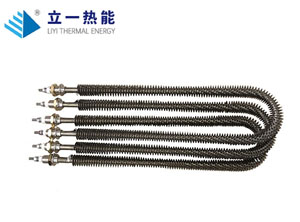Improving the energy efficiency and performance of mold heating tubes is the key to ensuring efficient and stable operation of heating equipment. Here are some specific measures:
Improve energy efficiency
Reasonable selection of heating tubes:
Reasonably select the material, specifications, and quantity of heating tubes according to actual needs to avoid redundancy and waste.
Choose high-quality heating tube materials and insulation materials to improve heating efficiency and reduce energy consumption.

Optimize the temperature control system:
Choose a suitable temperature control system to precisely control the temperature of the heating tube and avoid excessive energy consumption.
By adjusting the parameters of the temperature control system, such as temperature setting and time control, the heating efficiency can be further improved.
Reduce reactive power loss:
Using pipeline insulation method to reduce heat exchange between heating tubes and air, thereby reducing reactive power loss.
Regularly inspect and maintain the heating tube and its accessories to ensure that they are in good working condition.
Regular cleaning and maintenance:
Timely clean the scale and sediment on the surface of the heating tube and mold to maintain their good heat transfer performance.
Regularly replace aging heating tubes and temperature control devices to reduce energy waste and loss.
Improve performance
Enhance corrosion resistance:
Select materials with good corrosion resistance, such as stainless steel, tungsten, titanium, etc., to improve the corrosion resistance of the heating tube.
Spray coating, electroplating and other treatments are applied to the surface of the heating tube to form a layer of anti-corrosion coating, enhancing its corrosion resistance.
Optimize structural design:
Improve the structural design of the heating tube, such as increasing the surface area to enhance heating efficiency.
Ensure a good fit between the heating tube and the mold to improve heat transfer efficiency.
Control heating temperature:
During use, the heating temperature should be controlled reasonably to avoid prolonged exposure to high temperatures and reduce the impact of high-temperature oxidation.
In summary, by selecting heating tubes reasonably, optimizing temperature control systems, reducing reactive power losses, regularly cleaning and maintaining, and enhancing corrosion resistance, the energy efficiency and performance of mold heating tubes can be significantly improved. The implementation of these measures will help reduce energy consumption, improve production efficiency, and extend the service life of heating tubes.



